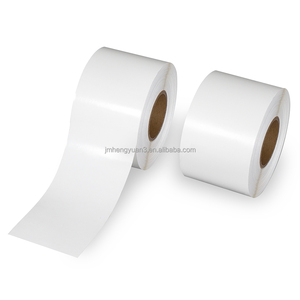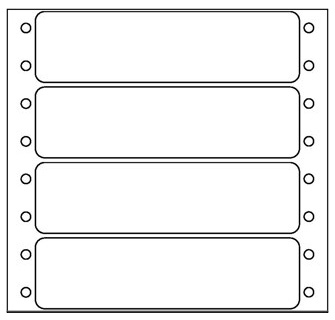Recognizing How Blank Labels Job to Improve Your Labeling Experience
Recognizing the auto mechanics of blank labels is vital for optimizing your labeling methods throughout different contexts. These functional tools use considerable benefits, such as modification and adaptability, making them a suitable selection for both expert setups and personal use. From supply management to home organization, the effects of their tactical application can bring about improved performance. However, to completely realize how these labels can change your procedures, one have to consider the various kinds readily available and the myriad means they can be personalized to match certain needs.

Advantages of Using Blank Labels
Blank labels supply a versatile remedy for different labeling demands, making them invaluable in both personal and specialist settings. Their flexibility allows customers to create personalized labels customized to certain demands, boosting organizational performance. Whether utilized in home workplaces, retail environments, or industrial applications, blank labels promote the identification and categorization of items, papers, and personal items.
One significant benefit of blank labels is their cost-effectiveness. By enabling individuals to publish just the labels they require, waste is minimized, and stock monitoring ends up being more manageable. Furthermore, blank labels work with various printing techniques, consisting of inkjet and printer, making them available for different users.

Furthermore, making use of blank labels streamlines the process of updating details, as users can quickly publish brand-new labels to replace out-of-date ones, ensuring that all products and papers are accurately labeled. On the whole, blank labels offer a functional and effective labeling service for diverse applications.
Kinds Of Blank Labels Available
What choices are readily available when it comes to blank labels? Blank labels be available in a variety of types, each fit for various applications and choices. The most common types include paper labels, which are flexible and cost-efficient, making them perfect for daily usage. They are readily available in various finishes, such as matte and glossy, enabling aesthetic versatility.
Another popular option is synthetic labels, typically made from products like polyester or vinyl. These labels are understood for their toughness and resistance to water, chemicals, and tearing, making them suitable for severe atmospheres. They are frequently utilized in industrial settings or for labeling products that may be exposed to dampness.
In addition, there are thermal transfer labels, which call for a printer that makes use of heat to transfer ink onto the tag surface area. These labels are preferred for their high-grade print and longevity.
Lastly, specialized labels provide to details demands, such as removable labels for temporary usage or high-temperature labels for extreme problems. Comprehending these options enables users to pick the most appropriate blank label for their distinct labeling requirements.
Personalization Options for Labels
A vast array of personalization choices is available for labels, permitting individuals to tailor them to specific demands and branding demands. Users can pick from different dimensions, forms, and materials to ensure that the labels effectively fit their designated objective. Typical materials consist of paper, polyester, and vinyl, each supplying different degrees of longevity and visual appeal.
Color alternatives play an important role in modification, allowing brand names to websites maintain uniformity with their corporate identification. Users can select from a spectrum of colors or perhaps decide for custom-made printing to match specific branding components. In addition, labels can be published with unique styles, logo designs, and text, boosting brand name acknowledgment and aesthetic effect.
An additional essential facet is the choice of adhesive. Labels can be made with permanent, detachable, or repositionable adhesives, depending on the application requirements. This adaptability enables efficient labeling remedies across various atmospheres, from retail to commercial settings.

Tips for Effective Labeling
Efficient labeling goes beyond personalization; it also entails tactical considerations that enhance capability and communication. To attain reliable labeling, begin by plainly defining the function of each label.
Following, focus on exposure by picking suitable shades and fonts. High comparison in between text and history enhances readability, while bigger typefaces assist in fast identification. Furthermore, this contact form ensure that labels are positioned in a regular and rational fashion, making it simpler for customers to find and analyze information.
Take into consideration the sturdiness of labels. Pick products suited for the certain environment where the labels will be used, whether it be indoors or outdoors. Water resistant or tear-resistant options might be necessary relying on the context.
Last but not least, routinely evaluation and upgrade your labels to reflect any type of modifications in details or use. This proactive technique not just keeps quality but also prevents complication with time. By following these suggestions, you can maximize the effectiveness of your labeling efforts, ensuring they serve their intended function effectively.
Applications of Blank Labels
Blank labels use many applications throughout different sectors, making them an important tool for organization and communication. These versatile labels are typically used in warehouses for inventory management, permitting companies to quickly determine and track items. By using blank labels to storage space containers, shelves, or pallets, companies can streamline their procedures and lower the chance of mistakes.
In the healthcare field, blank labels play a critical duty in classifying medicines and medical products, making certain correct identification and usage. Personalized labels can include vital details such as dosage, expiry days, and individual details, boosting safety and security and compliance.
In retail, blank labels aid in prices products, giving promos, or identifying shelf areas, which eventually enhances the client page experience. They allow for fast updates to prices or item info without the need for pre-printed labels.
In addition, blank labels are valuable for individual use, such as arranging home offices, crafting, or classifying food containers. Their versatility permits individuals to develop tailored options that meet certain needs. On the whole, the applications of blank labels are comprehensive, underscoring their value in fostering effectiveness and clarity in different setups.
Conclusion
In verdict, blank labels provide a versatile and effective remedy for various labeling requirements. Ultimately, the assimilation of blank labels right into functional processes adds to improved performance, making them an important resource for both personal and expert usage.